#Performance testing
Text
Agile Testing: Delivering High-Quality Software with Continuous Testing and Collaboration
In this paper, we will explore the key principles of agile testing, its benefits, and how it can be implemented successfully in organizations.
Agile testing is an approach to software testing that emphasizes the need for continuous testing and feedback throughout the software development lifecycle. This approach is based on the principles of the Agile Manifesto, which emphasizes collaboration, flexibility, and customer satisfaction. Agile testing has become increasingly popular in recent years as organizations seek to deliver…

View On WordPress
#Agile testing#automated testing#code review#collaboration#continuous testing#e-commerce development#enterprise software#mobile applications#open source development#performance testing#software development#test management#test-driven development#web applications
3 notes
·
View notes
Text
Every so often, you will read a performance benchmark (of a Java or other language application), with bold claims for how well X performs compared to Y. Testing the performance of your Java application is more an art form rather than engineering, and is a minefield of misconceptions, misunderstanding, and misinformation. This presentation reviews the basics of performance testing and give you concrete steps to build a robust performance testbed for your application.
0 notes
Text
Kiểm thử hiệu năng (Performance testing)
Kiểm thử hiệu năng (Performance testing) là một phương pháp kiểm thử phần mềm nhằm đánh giá tốc độ, khả năng phản hồi, độ ổn định và khả năng chịu tải của một ứng dụng hoặc hệ thống dưới các điều kiện khác nhau. Mục tiêu của kiểm thử hiệu năng là xác định và loại bỏ các vấn đề về hiệu năng để đảm bảo rằng hệ thống có thể hoạt động tốt trong môi trường thực tế và đáp ứng được các yêu cầu về hiệu…
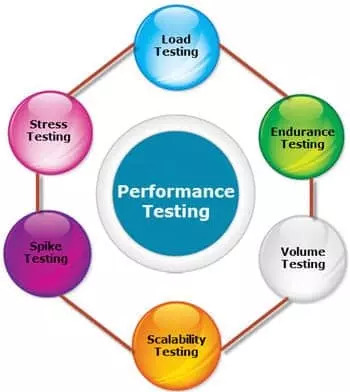
View On WordPress
0 notes
Text
Enhance your software testing skills! 📈 Dive into our latest insights and tips.
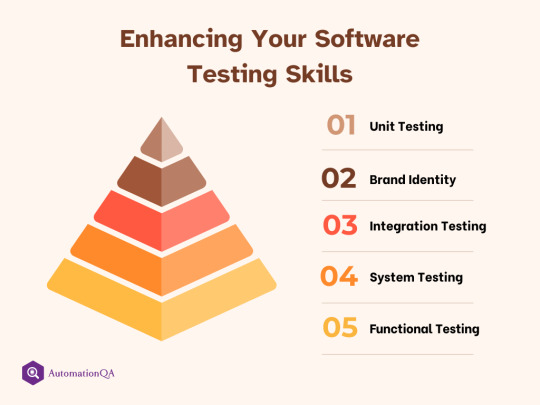
#performance testing#software testing#test automation#testing#automation testing#automationtesting#testautomation#automation
1 note
·
View note
Text
Do AMD Ryzen 7 8700G and Ryzen 5 8600G processors have enough power in gaming to make you forget about the video card?
We adore PCs outfitted with the latest and most high-performance components, running games at the highest possible FPS in 4K resolution. However, what do you do when your gaming budget doesn’t stretch beyond the price of a second-hand flagship phone?
AMD addresses this question and caters to budget-conscious gamers and casual players by introducing the 8000G Series. This series could serve as a…

View On WordPress
#AM5 socket motherboards#AMD 8000G series#APU benchmarks#CPU overclocking#DDR5 RAM#Gaming performance analysis#Gaming processors#Integrated graphics#Mini-ITX builds#PC gaming on a budget#Performance testing#Ryzen 5 8600G#Ryzen 7 8700G#Small form factor gaming#Synthetic benchmarks
0 notes
Text
Best Practices in Performance Testing

Consider a website or web application that is perfect when it comes to functional aspects but falters on the performance side of it. There is no point in providing endless functionalities that do not work on a scale. This is where performance testing becomes an absolute must!
Banking institutions, e-commerce companies, and many other businesses can benefit by investing in performance testing since it enhances the usability aspects of the application. It also helps in reducing the operational expenses; thereby providing an opportunity to win the customer’s trust.
What is Performance Testing?
Performance testing is the process of evaluating the features & functionalities of the product from a performance standpoint. The evaluation is done from the scalability, reliability, usability, and efficiency point of view.
Like any other form of testing, performance tests can also be executed using manual and/or automated ways. At the end of rigorous performance testing cycles, you would get a product whose features do not falter at a large scale.
Apache JMeter, LoadNinja, WebLOAD, EggPlant, etc. are some of the most popular automated performance testing tools.
Importance of Performance Testing
The normal question that many developers have is “Why should I do performance tests when I know that not many users would use my site (or application)?” As per our experience, this is a wrong notion since you never know when many users would start accessing your site. And these numbers will only grow once your site gains more popularity!
So, performance testing is not optional Here are some of the major reasons to run performance tests for your project:
Helps in delivering a more consistent top-notch end-user experience
Ensures that the product features work seamlessly when many users are simultaneously using the product
Unearths scalability and usability issues earlier in the development lifecycle, thereby helping build a more user-friendly product
Automated performance tests can be run at scale when integrated with a CI/CD pipeline
Measure product stability at peak traffic
Types of Performance Testing
Since there are various forms of performance tests, it is important to focus on the ones that add value when testing the product. For example, Stress testing is a form of performance testing strategy that lets you test the website (or app) under different stress (or load) conditions.
KPIs like throughput times, response times, etc. are checked to verify if the system performance is reinstated after there is a decrease in the load (or traffic). Memory leaks, CPU/GPU usage, RAM usage, and other metrics are measured during stress testing.
Shown below are the types of performance testing:
Stress Testing
Load Testing
Spike Testing
Soak Testing
Volume Testing
Also Read – Top 6 Types of Performance Testing
Performance Testing Best Practices
Till now you have learnt about the forms of performance tests and which ones to include in your priority list. However, having this information is not enough since it must be backed by the performance testing best practices. Some of the best practices are mentioned below:
It is important to include performance testing during the early stages of product development. Since performance testing can be time-consuming, the tests must target features that might slow down under heavy loads. Developers and testers can work together to identify such scenarios.
A good practice is to include automated performance tests into the CI/CD pipeline. There are several automated performance testing tools that let you run performance tests after code changes are pushed to the server.
At the early stages of testing, you would not have any performance benchmarks. In such scenarios, you should benchmark the performance against minimum acceptable performance standards.
Performance tests must cover all the relevant aspects of the product (i.e. database interactions, UI interactions, third-party services, and more) from a performance standpoint.
Reporting is an integral part of performance tests. Almost all the automated performance testing tools like Apache JMeter, LoadNinja, WebLOAD, EggPlant, etc. have built-in reporting. It is essential to leverage that feature to come up with performance test reports that can add value at every stage of the testing lifecycle.
Conclusion:
Performance testing services can be a pivotal step for businesses looking to ensure the reliability and scalability of their digital products. By implementing performance testing best practices from the outset, companies can lay a solid foundation for delivering high-quality user experiences, mitigating risks, and optimizing operational efficiency.
Testrig Technologies is a leading provider of extensive Performance Testing Services, offering unparalleled expertise through certified professionals. Our focus lies in delivering a suite of testing solutions, including Load Testing, Stress Testing, and Scalability Testing. Explore our diverse range of services and harness our expertise to enhance the performance and scalability of your applications.
0 notes
Text

Power Plant Performance Testing - TEFUGEN
0 notes
Text
Bash Script: Calculate before/after 2: Calculate Harder
As an update, or an evolution of my earlier script that did some simple math for me, I’ve made one that will full-on test a URL while I’m making changes to see what the impact performance is of my updates.
$ abtesturl.sh --url=https://example.com/ --count=10Press any key to run initial tests...Initial average TTFB: 3.538 secondsPress any key to re-run tests...Running second test...Second average…

View On WordPress
#automation tools#Bash Scripting#data analysis#performance testing#report generation#script updates#server response time#TTFB measurement#web development tools#website optimization
0 notes
Text

Our Load and Performance testing experts at SDET Tech drive the complete end-to-end load and performance testing solutions for your requirements to deliver a high-performing product on production. The speed of your app and its performance are essential to the success of your product
0 notes
Text

www.qualibar.com
Benefits of AI in Software Testing
AI (Artificial Intelligence) brings several benefits to software testing, enhancing efficiency, accuracy, and effectiveness in various aspects of the testing process.
Here are some key benefits of using AI in software testing:
Automation and Speed: AI enables the automation of repetitive and time-consuming testing tasks. This significantly speeds up the testing process, allowing for faster release cycles without compromising quality. Automated testing can run 24/7, providing continuous feedback.
Efficiency and Resource Optimization: AI-powered testing tools can optimize resource utilization by executing tests in parallel, reducing the overall testing time. This efficiency helps in allocating resources more effectively and allows testing teams to focus on more complex and creative aspects of testing.
Test Case Generation: AI can assist in the creation of test cases by analyzing application requirements, specifications, and historical data. This helps in identifying critical test scenarios and generating test cases that cover a broader range of possible scenarios, improving test coverage.
Predictive Analysis: AI algorithms can analyze historical data to predict potential areas of defects or vulnerabilities in the software. This predictive analysis helps testing teams prioritize testing efforts on high-risk areas, improving the overall effectiveness of testing.
Self-Healing Tests: AI can be employed to create self-healing tests that adapt to changes in the application's codebase. When minor changes occur, AI algorithms can automatically update test scripts, reducing maintenance efforts and ensuring that tests remain relevant.
Data-Driven Testing: AI can analyze large datasets to identify patterns and correlations, helping in the creation of realistic and data-driven test scenarios. This ensures that tests are more representative of real-world usage, leading to more effective testing.
Performance Testing: AI can be applied to simulate real-world user behavior and generate realistic load scenarios during performance testing. This helps in identifying and addressing performance bottlenecks and ensuring that the software can handle varying levels of user activity.
Security Testing: AI can enhance security testing by automating the identification of vulnerabilities and potential security threats. AI algorithms can analyze code for patterns associated with security risks and help in the early detection of potential security issues.
User Experience Testing: AI can analyze user interactions and feedback to provide insights into the user experience. This information can be used to optimize the software's usability and identify areas for improvement in terms of user satisfaction.
Regression Testing: AI can efficiently handle regression testing by automatically identifying changes in the codebase and selectively running relevant test cases. This ensures that new updates or features do not introduce unintended side effects.
In summary, integrating AI into software testing processes brings about improvements in efficiency, accuracy, and overall testing effectiveness, ultimately contributing to the delivery of higher-quality software.
#qualibar#qualibarinc#software testing#softwaresolutions#softwaretestingsolutions#ai#ai-in-softwaretesting#Automation and Speed#Efficiency and Resource Optimization#Test Case Generation#Predictive Analysis#Self-Healing Tests#Data-Driven Testing#Performance Testing#Security Testing#User Experience Testing#Regression Testing#itsolutions#qualibarIndia#qualibarnewyork#qualibaratlanta#qualibargeorgia#qualibarbhubaneswar#qualibarusa#artificialintelligence
1 note
·
View note
Text
What is Performance Testing? An Overview

Performance testing is a crucial aspect of software testing aimed at evaluating system responsiveness, stability, and scalability under varying loads. It involves simulating real-world scenarios to measure how well an application performs under expected and peak conditions.
Through stress, load, and endurance testing, performance testers assess factors such as response times, throughput, resource usage, and reliability. By identifying performance bottlenecks and weaknesses, organizations can optimize their systems for improved user experience, higher reliability, and better resource utilization, ensuring applications can handle the expected workload without degradation in performance.
Read this blog - The Ultimate Guide to Performance Testing to know more in details.
0 notes
Text
Beyond the Bugs: Strategies for Effective Software Testing
The value of efficient software testing has grown in the ever-changing field of software development. While identifying and resolving defects is a crucial step in the process, effective testing goes beyond this. In order to achieve a thorough strategy that guarantees software products that are dependable, strong, and of the highest caliber, we explore techniques in this article that go beyond the conventional limits of software testing.In the vibrant city of Bhopal, where technological advancements are shaping the future, the need for skilled software testers is more crucial than ever. To equip yourself with the knowledge and expertise needed for the dynamic field of software testing, consider enrolling in the best Software Testing course in Bhopal,Moradabad, Delhi, Noida and all cities in india.
0 notes
Text

Poor performance of websites, applications, and browsers cost brands their reputation and customer loyalty. Apps and websites that perform well in the digital landscape directly impact the user experience, improving user engagement and boosting conversion rates, reinforcing brand credibility. As user expectations soar and the marketplace is fiercely competitive, optimizing the performance of digital platforms is no longer just a technical consideration.
Read more
0 notes
Text
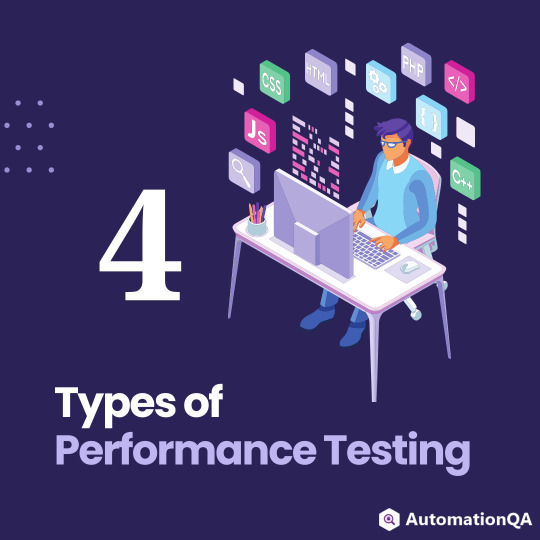

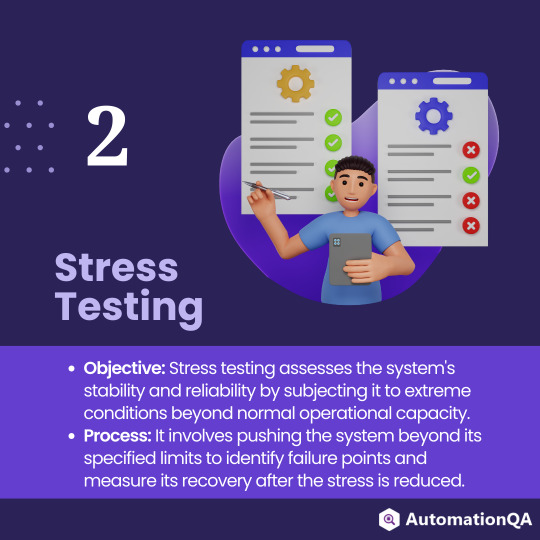

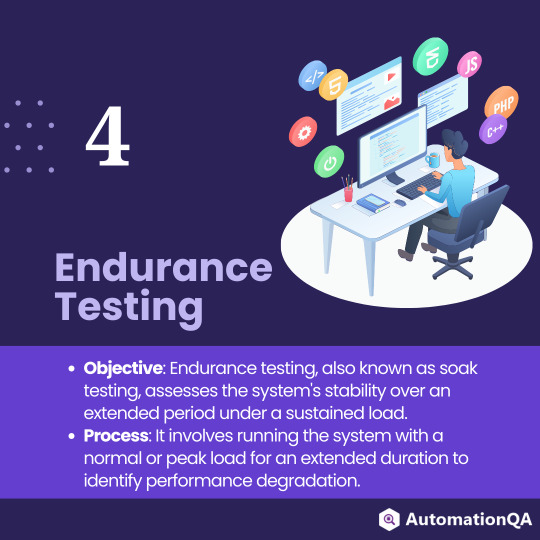
Elevate your software's performance game with these 4 essential testing types! 🚀✨
From Load to Stress, discover the key strategies to ensure your application thrives under any conditions.
#performance testing#testing#types#strategy#load testing#stress testing#scalability testing#endurance testing#application
0 notes
Text
Mastering Business Performance: Comprehensive Course
Business Performance Management Course is a comprehensive program designed to equip professionals with the necessary skills and knowledge to effectively manage and enhance the performance of their organizations. This course covers a wide range of topics, including goal setting, key performance indicators, data analysis, financial planning and analysis, budgeting, forecasting, and risk management. Participants will learn how to develop and implement strategies that align with their organization's goals and objectives, measure and evaluate performance, identify areas for improvement, and enhance decision-making processes. The course incorporates practical case studies, interactive sessions, and real-world scenarios, enabling participants to apply their learning to their respective industry contexts. Whether you are a seasoned professional or a newcomer to the field, this course will help you become an effective performance manager and drive business success.Here is the course link:https://lead-academy.org/course/business-performance-management

0 notes